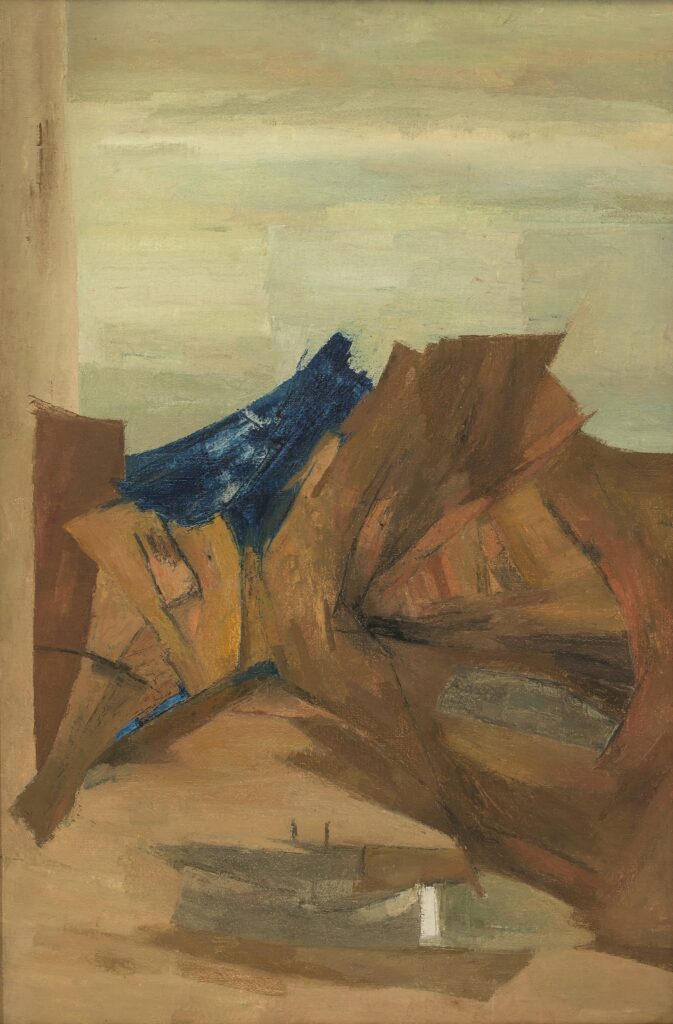In the course of his lengthy career, Ram Kumar’s paintings gradually moved from figuration towards pure abstraction. His figurative landscapes came undone into swathes of colors, foregoing defined pictorial elements and slowly mutating to barely recognizable forms juxtaposed in an overlay of vertical and horizontal planes.
His unique visual vocabulary in painting landscapes was developed from treasured memory of scenery from his hometown and later his travels, as seen in the present work from the early 1980s. The works from these years are relatively flat in texture, with minimal build-up on the canvas. Although his landscapes were not realistic depictions of nature, “wedges of land and expanses of water; demarcations of land as arid and fertile; febrile rock and luxuriant vegetation; sunlight and shade; moisture; mist” are all communicated through his instinctive use of color. (R. Bartholomew, ‘The Abstract Principle in the Paintings of Ram Kumar’, Lalit Kala Contemporary 19 & 20, New Delhi, April – September 1975, p. 14.) Although his color palette ranging from browns, ochres, and yellows was limited during this time, “they derive their significance from their tonal subtleties, the tensions they create in passing from one tone to another.” (J. Swaminathan, ‘Ram Kumar – A New Stage’, Lalit Kala Contemporary 40, New Delhi, March 1995, p. 42.)
Auction Catalogue – South Asian Art – ‘Modern and Contemporary’ – September 24 – 28, 2020
